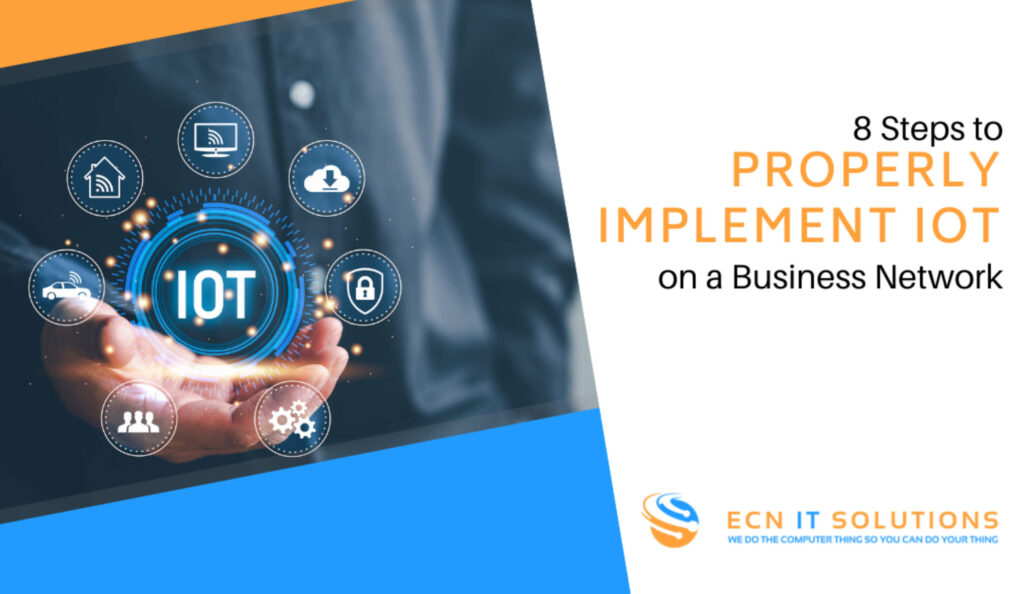Understanding the Fundamentals of IoT
- Define Objectives and Use Cases
Before embarking on an IoT implementation journey, it is crucial to define clear objectives and identify relevant use cases for your business. Consider what problems you aim to solve or opportunities you wish to explore through IoT technology. Whether it’s optimizing operational processes, improving customer experiences, or enhancing product functionality, having well-defined objectives will guide your implementation strategy.
- Assess Network Readiness
Evaluate your existing network infrastructure to ensure it can support the additional IoT devices and the increased data traffic they generate. Consider factors such as bandwidth, latency, and security protocols. Upgrading network components may be necessary to accommodate the unique requirements of IoT deployments. Conduct thorough assessments to identify potential bottlenecks or vulnerabilities that could compromise performance or security.
Planning and Design
- Develop a Comprehensive Plan
A detailed implementation plan is essential for the successful deployment of IoT solutions. Outline the scope of the project, establish timelines, allocate resources, and define roles and responsibilities. Consider factors such as device selection, connectivity options, data management, and integration with existing systems. Engage stakeholders from across the organization to ensure alignment with business objectives and address any potential challenges proactively.
- Focus on Security
Security is paramount in IoT implementations to protect sensitive data, preserve privacy, and prevent unauthorized access to devices or networks. Implement robust security measures at every level, including device authentication, encryption, access control, and intrusion detection systems. Stay informed about emerging threats and vulnerabilities in IoT ecosystems and regularly update security protocols to mitigate risks effectively.
Implementation and Deployment
- Select the Right IoT Devices and Platforms
Choose IoT devices and platforms that align with your specific requirements, budget, and scalability needs. Evaluate factors such as sensor capabilities, communication protocols, interoperability, and vendor reputation. Look for solutions that offer comprehensive features for data collection, analysis, and visualization to derive maximum value from your IoT investments. Consider future expansion and compatibility with emerging technologies to future-proof your infrastructure.
- Pilot Testing and Iteration
Before deploying IoT solutions across the entire organization, conduct pilot tests in controlled environments to validate functionality, performance, and user experience. Gather feedback from stakeholders and end-users to identify any issues or areas for improvement. Iterate on the design and implementation based on insights gained during the testing phase. Gradually scale up deployment while closely monitoring system performance and addressing any challenges that arise.
Monitoring and Maintenance
- Establish Ongoing Monitoring
Continuous monitoring is essential to ensure the stability, security, and efficiency of IoT deployments. Implement real-time monitoring tools and analytics to track device performance, network traffic, and security events. Proactively identify and address potential issues before they escalate into significant problems. Establish clear escalation procedures and response protocols to mitigate risks and minimize downtime effectively.
- Perform Regular Maintenance
Regular maintenance is critical to keep IoT systems running smoothly and prevent degradation or failure over time. Develop a maintenance schedule for firmware updates, patch management, and hardware inspections. Conduct regular audits of device configurations and security settings to ensure compliance with best practices and regulatory requirements. Train personnel responsible for maintenance tasks and establish documentation processes to facilitate troubleshooting and troubleshooting.
Start Implementing IoT Now
Implementing IoT on a business network offers immense potential for innovation, efficiency, and competitive advantage. By following these steps and best practices, you can minimize risks and maximize the benefits of IoT technology for your organization.
Remember to continuously evaluate and adapt your IoT strategy to evolving business needs and technological advancements. If you’re ready to embark on your IoT journey, contact ECN IT Solutions for expert guidance and support tailored to your specific requirements. Let us help you unlock the full potential of IoT for your business.

